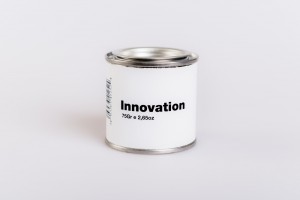































Today's conversations around innovation -particularly within the IT industry -tend to paint it as something disruptive, technology-based and radically changing markets.

This is a partial picture of it. It's not always necessary to be radical, and it is not just about introducing new products or services into a market. There are several types of innovation that are equally effective and can bring enduring sources of competitive advantage.
Having a clear framework around the different dimensions of innovation can help organizations develop the right strategy and succeed in their innovation journey.
One of the innovation frameworks I use at Ciscocategorizes innovation across four dimensions:
Products & technologies-This entails introducing totally new products and/or services often based on the latest technology developments. The category is indeed also about innovating existing products by making them better in terms of performance, features, forms and functionalities. For instance, a new BMW has better features, safety, and fuel efficiency than an earlier model, despite the fact that both models are, in essence, just cars.
Processes- Organizations can create or improve processes, making them more effective or efficient at delivering what they have to offer. The current transformation happening in the retail industry is a good illustration of this: thanks to real-time analytics, retailers are radically transforming their operations. They are now better at managing stock levels, doing more accurate demand prediction, and monitoring customer sentiment in real-time.
Position-Innovation can occur by repositioning the meaning of a current product/service in the eye of the consumer and by opening up new market segments. A good example is Nestle's move from the food segment to the healthy nutrition and wellness segments.
Business model -Along this dimension, companies innovate around what the organization does and how the business works. This innovation type can entail several aspects of a business, from reframing an established value proposition, to rethinking a company's role in the value chain. An interesting illustration of this is Michelin (Fleet Solutions), who innovated their business model by providing a tire management service (based on kilometers driven) instead of just selling tires. This changed their revenue stream and cost structure, and addressed customer needs in much better way.
Among these four dimensions, there are strong interdependencies and overlaps. One innovation form can trigger others. For instance, business model innovation profoundly shapes innovation in products, processes and position. IBM's business model move from hardware to software triggered a shift in the company's product and technology strategy. In a similar vein, new technology developments can give rise to new innovation opportunities in business models.
When innovating across any of these four dimensions, companies have to choose another key ingredient -the degree of noveltyof their innovations. When introducing a new product, process or business model, they face the decision of whether to adopt minorincremental improvements, to embraceradical changes, or to rather drivedisruptive shifts.
 Needless to say, each innovation form opens up different business opportunities and requires very different resources, leadership commitments, and investment timeframes. Clearly, it is one thing to come up with an improved version of a product; but something else to reinvent the company's business model.
Needless to say, each innovation form opens up different business opportunities and requires very different resources, leadership commitments, and investment timeframes. Clearly, it is one thing to come up with an improved version of a product; but something else to reinvent the company's business model.
When looking at the innovation space, every leader should be sure to consider the relevant questions:Which innovation types are right for my organization? Which ones should be pursued? What is the optimal combination among product, process, position and business model innovations?
To find the right answer, several factors -internal and external to the organization -need to be taken into account. Such factors will range from the industry context and market evolution, to the company's standing and organizational culture.
Only by embracing a holistic approach to innovation, can companies grasp the opportunities available in today's fast-moving markets.
 Горячие метки:
Горячие метки: